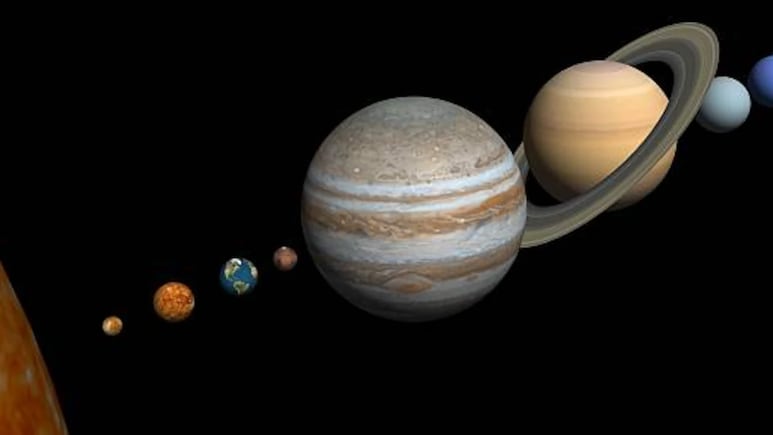
- Jupiter's growth created gaps that stopped Earth's building blocks falling into the Sun
- Jupiter's gravity formed rings that trapped dust, aiding rocky planet formation
- Jupiter divided the solar system into inner and outer regions, preserving isotopic differences
Jupiter was shaping the fate of our solar system long before Earth came into existence. A new study conducted by scientists at Houston-based Rice University has revealed that this giant planet created gaps in the early solar system that prevented the building blocks of Earth from being pulled into the Sun.
The study shows that as Jupiter grew in size, it blocked the flow of gas and dust toward the inner solar system. This process stopped the material that later formed Earth, Venus, and Mars from spiraling into the Sun.
According to scientists, Jupiter's powerful gravity not only helped in stabilising the orbits of the inner planets, but also influenced the entire structure of the solar system.
It created rings and gaps that determined when and under what conditions rocky planets would form.
Andre Izidoro, co-author of the study and an assistant professor of Earth, environmental and planetary sciences at Rice University, said Jupiter not only became the largest planet, but also shaped the structure of the entire solar system. He also said that if Jupiter had not existed, the Earth probably would not have been as we know it today.
Using computer simulations, Izidoro and his team studied how Jupiter's rapid growth in its first few million years affected the layer of gas and dust that surrounds the Sun. The results revealed that Jupiter's gravity caused ripples in the crust, creating ring-like bands that acted like a "cosmic traffic jam." These dense rings trapped dust particles that would otherwise fall into the Sun, and thus helped form the solid building blocks of the planets.
As Jupiter grew larger, it created a wide gap in the crust that divided the Solar System into two parts-the inner and outer regions. This partitioning prevented material from mixing freely between the two parts, preserving the distinct isotopic signatures found in the meteorites, one from the inner solar system and the other from the outer part. This process also created new regions where planetesimals could form at a later time.
The study also revealed that some ancient meteorites, called chondrites, formed millions of years after the solar system's first solid bodies formed. These meteorites are considered among the purest materials because the tiny molten particles they contain, called chondrules, preserve the early chemical history of the Solar System.
Izidoro said there was a long-standing question as to why some meteorites formed two to three million years after the first solid bodies formed. This study made it clear that Jupiter itself created the conditions for their late formation.
By shaping the disk and restricting the inward flow of material, Jupiter likely induced a second generation of planetesimals to form later. Some of these later became chondritic meteorites, which fall on Earth even today. The same structures of rings and voids predicted in the team's model now appear in young stellar systems observed with Chile's Atacama Large Millimeter/submillimeter Array (ALMA).
This theory reinforces the idea that giant planets shape their surrounding atmospheres as they form.
Izidoro said that our solar system was no different. Jupiter's early growth left a mark that can still be seen today in meteorites that fall to Earth.
The findings of this study were published on October 22 in the journal Science Advances.
Track Latest News Live on NDTV.com and get news updates from India and around the world

